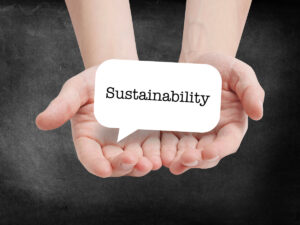A few weeks ago I wrote a post about entrepreneurs in India who, having obtained a certain level of wealth, have turned their attention and fortunes into doing good [Prosperity and Altruism]. In that post, I noted that this development closely followed what Abraham Maslow might have predicted with his hierarchy of needs. A similar scenario is playing out in China according to an article in the Washington Post [“China’s rich give back as philanthropy surges,” by Susan Fenton, 5 December 2007].
“Philanthropic donations in China are surging, as the country’s nouveau riche expands with economic development, and should be boosted in the next few years by much-needed tax incentives, analysts say. Donations from the top 50 publicly disclosed philanthropists in China have risen eight-fold in the past three years, totaling US$10.9 billion so far this year, according to investment bank UBS AG.”
One might think that the list of nouveau riche Chinese philanthropists would be headed by manufacturers, but it’s not. The list is topped by people who made their money in real estate and trade.
“They are led by 85-year-old Yu Pengnian of Shenzhen-based trade and property group Pengnian Industries, who has donated US$260 million to health and higher education since 2003, according to the Beijing-based Hurun Report’s league table. Yu is followed by a younger crop of entrepreneurs headed by Zhu Mengyi of property developer Hopson Development (0754.HK), with donations totaling US$140 million in the past four years, and Niu Gensheng of Inner Mongolian milk producer Mengniu Group who has given away US$85 million, according to the Hurun Report. Education is the biggest beneficiary of philanthropy followed by social welfare causes, healthcare and poverty alleviation.”
Fenton reports that these donations are internal to China and that recipient charities there are limited to those approved by the government — which are fewer than 20 in number. Fenton reports that donations could be even higher were proper tax incentives in place.
“Individuals … can offset just 2 percent of their salary against tax for charitable and philanthropic donations, although the government plans to increase that to 12 percent as soon as next year. That’s still low compared with a 25 percent tax exemption in Hong Kong and 20 percent in Taiwan, but it’s a start and should trigger much higher contributions, analysts say. Poor tax incentives and difficulty in establishing a charity in China have encouraged wealthy Chinese to establish foundations in neighboring Hong Kong, where the number of registered charitable foundations has doubled in the past decade to 1,200, according to UBS.”
Corporate charitable deductions are also expected to rise as tax incentives for companies improve. Fenton reports that analysts believe that one of the biggest beneficiaries of increased philanthropy could be the environment. This is good news for a country who just learning about the high cost of uncontrolled industrialization. See my earlier post Globalization and Green Policies in China.
Further evidence that Maslow’s hierarchy is being followed comes from charitable giving data from other Asian countries.
“‘Philanthropists try to take care of poverty first. As the economy matures they look more at the environment,’ said Terry Farris, head of UBS’ Asia-Pacific philanthropy services. Beijing’s tax incentives track a regional trend. Singapore is scrapping a rule that 80 percent of donations must be made locally, aiming to make the city state a philanthropic hub. Japan is due to relax rules next year to stem a slowdown in donations. In a sign of Asia’s growing clout, former U.S. President Bill Clinton will hold his annual philanthropic summit in Hong Kong next year.”
Getting wealthy Chinese individuals involved in philanthropy is important since they represent the second largest collection of wealthy people in the region.
“China accounts for 21 percent of the wealth of Asia-Pacific’s U.S. dollar millionaires, second to Japan which accounts for 44 percent, according to a report by Merrill Lynch and Capgemini. China’s millionaires — 30 percent of whom are female — mostly rely on business and stock options for their wealth, whereas inheritance and income are the main wealth sources of rich Japanese. China is also home to nearly a third of Asia-Pacific’s super rich, or those with more than $30 million in assets, according to Merrill Lynch and Capgemini.”
Evidence is mounting that globalization not only helps those mired in poverty work their way out of that brutal situation but it provides opportunities for those on the other end of the spectrum (the wealthy) to invest their fortunes in ways that help promote a virtuous circle of development.




